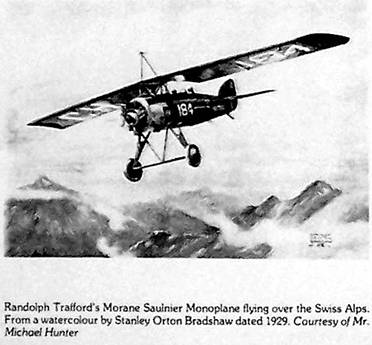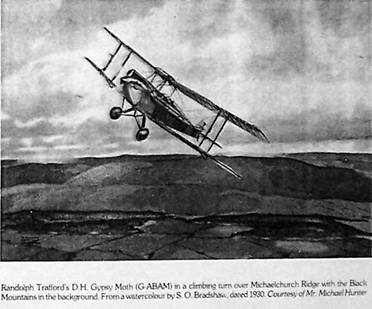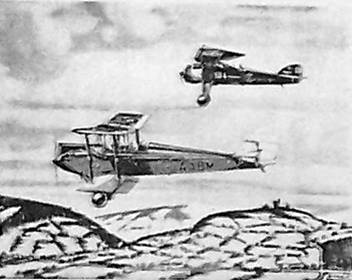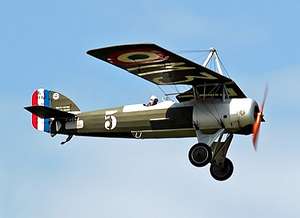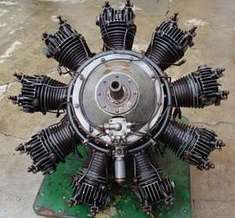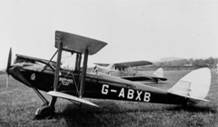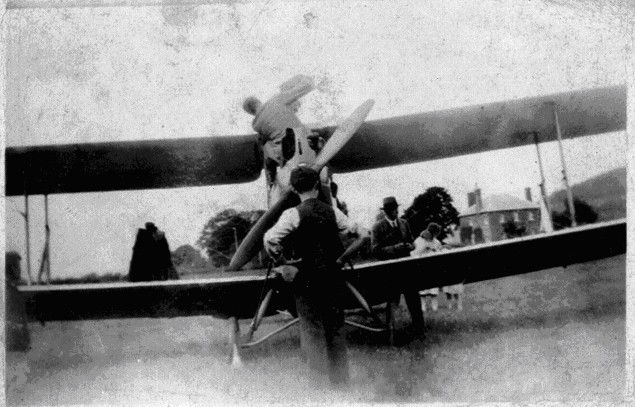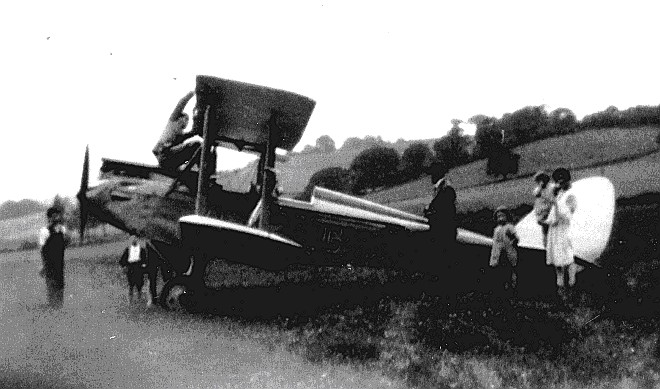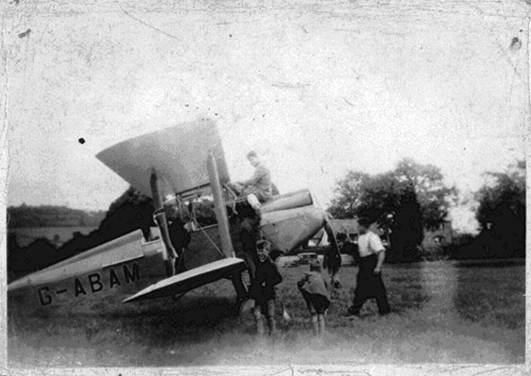Title: | Early Aviation in Ewyas Lacy |
Date: | 1930’s |
| Michaelchurch Escley, lying peacefully in the shadow of the Black Mountains, is an unlikely place to find an important milestone in the history of civil aviation. However, the fact is that around 1930 this remote rural haven was the location of the first properly equipped airfield in Herefordshire. Moreover, it was created by a private citizen and local resident, Randolph Trafford of Michaelchurch Court. Amongst the archives at Michaelchurch Court there is a photocopy of an extract from an unidentified published work, with illustrations, describing Randolph Trafford’s aviation exploits. The illustrations are reproduced below, with a transcription of the text. A more comprehensive biographical article on Randolph Trafford and his flying activities can be found here . “Randolph Trafford lived at Michaelchurch Court but also owned a chalet in Switzerland. It was during the late 1920’s that he learned to fly in Switzerland on a French-built Morane Saulnier monoplane, an aircraft which he later flew back to England.
Several hedges had been grubbed out on a ridge overlooking Michaelchurch village and an airfield was born. Around 1930, Trafford purchased another aircraft, a make that was rapidly beginning to eclipse the sturdy old Avro, a de Havilland Gypsy Moth. At the same time he also decided to upgrade the airfield by adding a windsock, a hangar and petrol pumps. Throughout the 1930’s a steady stream of visiting pilots landed at Michaelchurch Airfield, often arriving from distant parts of Europe, and sometimes as many as 15 visiting aircraft would be parked up in the clear mountain air of the ridge at any one time.
A new Golden age had arrived for private flying.” |
The article also includes a copy of an undated ink sketch by the same artist of both of Randolph Trafford’s aircraft, below.
|
| The Morane Saulnier and Randolph Trafford’s later Gypsy Moth aircraft flying over the Golden Valley, from an undated ink sketch by S.O. Bradshaw. |
Randolph Trafford’s original French-built Morane Saulnier was a type MS137, built c 1927. It was a parasol wing monoplane, so-called because the aircraft body was suspended by struts or wires beneath the wing, which therefore looked akin to a parasol or umbrella overhead.
The MS137 was a variant of the MS138 two-seater training aircraft, and had a more powerful 120 horsepower, nine cylinder Salmson 9AC rotary engine fitted into the standard MS138 body.
|
|
|
| A Morane-Saulnier MS138 in flight | Salmson 9AC engine as fitted to the MS137 |
More details on these aircraft can be found here [use Google Translate or similar to translate webpage into English]. Flying such a machine from Switzerland to Michaelchurch must have been a considerable adventure at the time.
|
|
| A de Havilland Gipsy Moth |
The de Havilland Gipsy Moth was a revolutionary aircraft in its time as the first truly dependable, affordable and simple to operate machine for civilian flying, and became widely known between the Wars as the aircraft of choice for many record attempts as pioneers pushed back the boundaries of aviation. More details of this aircraft can be found here.
The Michaelchurch airfield was sited atop the opposite ridge of the Escley valley from Michaelchurch Court, on a flat field opposite Coed Poeth farmhouse that was once part of Michaelchurch common. The field is still called ‘the aerodrome’, although no traces now remain of the hanger or other facilities. Local people relate that it was Randolph Trafford’s habit when returning to Michaelchurch from a flying trip to signal his arrival by ‘buzzing’ the Court before landing, whereupon his driver would leap into the car and race down the Court drive and up the hill to the aerodrome in an attempt to get there before the plane had come to a halt. Scant regard was paid to any other traffic either on the outward or return journeys, and the locals knew well enough to keep clear of the road junctions when they heard the plane in the vicinity.
Prior to the installation of refuelling facilities at the airfield, Randolph Trafford would fly the plane down to Turnastone and land in the field behind the Wilding’s garage to fill up. This would become quite an event, with local people turning out to help carry the petrol in cans from the Wilding’s pumps to the plane, as can be seen from the photographs below of Trafford’s Gipsy Moth being refuelled in this way. According to Hedley Wilding, Randolph always insisted on pouring the petrol into the aircraft himself, filtering it carefully through muslin cloth to avoid any risk of dirt blocking the carburettors or fuel lines while in flight with potentially disastrous results.
| ||
| ||
|
In Michaelchurch, the busy airfield is said to have welcomed many distinguished visitors in the 1930’s, who were offered hospitality at Michaelchurch Court. According to local stories, these included a number of high-ranking members of the German Nazi party, and it seems that the Traffords may have shared the admiration of the regime in 1930’s Germany that was prevalent in many sections of the British upper classes at that time.
Ref: rs_mic_0142

